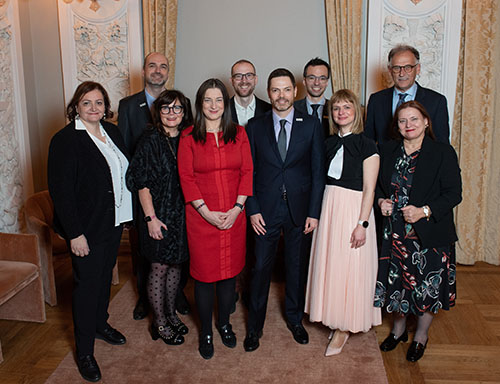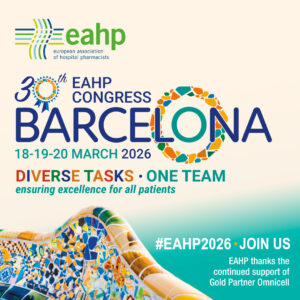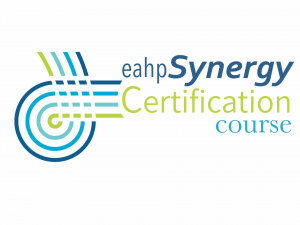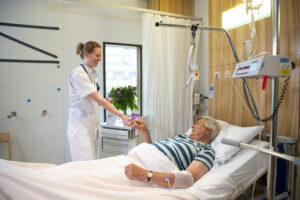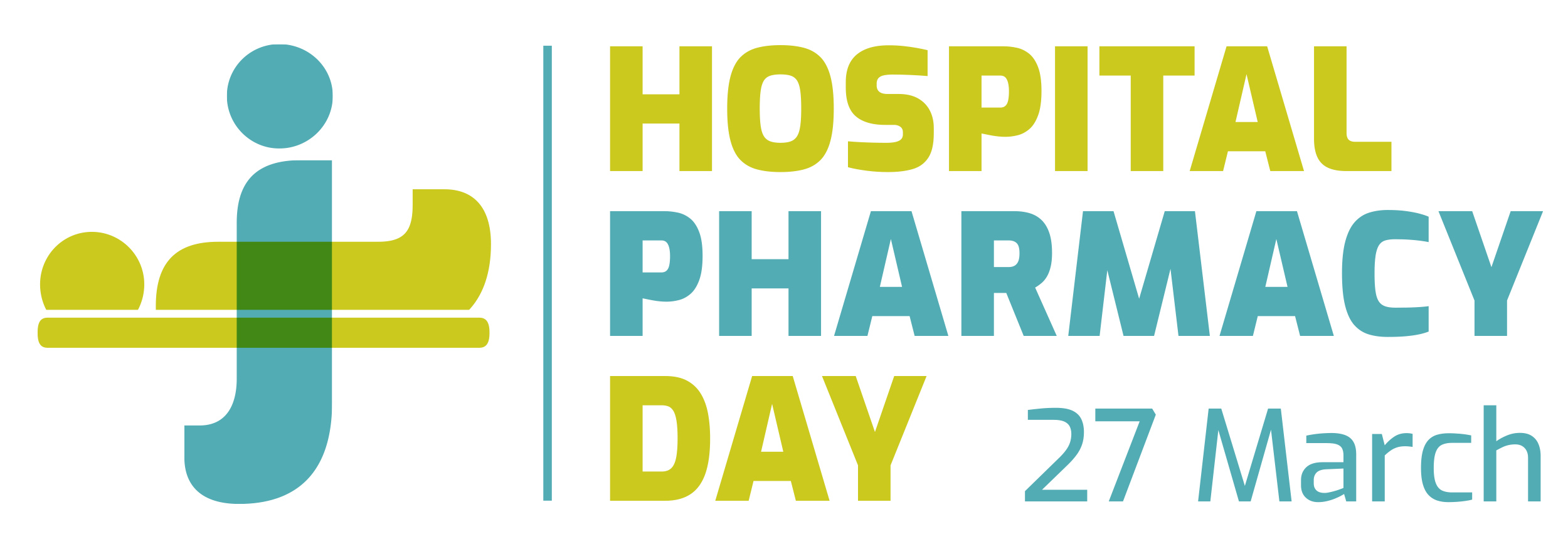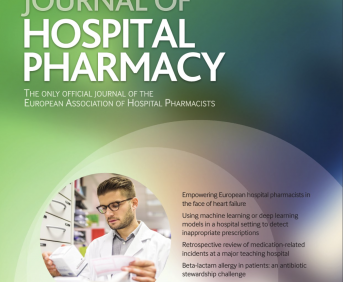COMPREHENSIVE SMOKING CESSATION PROGRAMME RUN BY CLINICAL PHARMACIST IN COLLABORATION WITH THE ADDICTOLOGY DEPARTMENT
Pdf

European Statement
Clinical Pharmacy Services
Author(s)
Mathilde ROCHE, Niccolo CURATOLO, Marion ADLER, José POLO DEVOTO, André RIEUTORD
Why was it done?
Many smoking patients are not identified as smokers when admitted at the hospital, depriving them of any help to quit smoking. During medication reconciliation at admission (MR), the pharmacist is in a position to identify smoking patients and then offer a support programme.
What was done?
An integrated care model based on a smoking cessation programme was designed to assist smoking patients to quit tobacco. Pharmacy and addictology departments co-built and led the project. It was implemented and proposed to patients from May 2018 in three medical and surgical wards.
How was it done?
The project included five steps:
1. Training of one clinical pharmacist about smoking cessation by the addictology team.
2. Designing the process and developing tools used for a smoking cessation programme.
3. Implementing the programme.
4. Evaluating the pilot phase.
5. Developing a comprehensive training programme (including role-play sessions) for the pharmaceutical team.
The process counted six steps:
1. Smoking patients’ identification (MR, patient record, request from doctors). If the patient was polyaddicted, the addictology team was informed.
2. First patient visit: patient consent was collected, anamnesis related to tobacco and explanation about nicotine’s mechanisms and nicotine substitutes given. Appropriate nicotine substitutes were selected and tested with the patient.
3. Prescription and administration of nicotine substitutes.
4. Second patient visit (24 to 48 hours’ later): nicotine substitutes adjusted if needed.
5. Third patient visit if needed.
6. Discharge medication reconciliation.
What has been achieved?
During 4 months, 62 patients were identified as smokers during MR interviews. Twenty-seven per cent of the patients (n= 17) were sent to the addictology team because of polyaddiction, 39% (n=24) refused the programme and 34% (n=21) accepted to experience our support programme. Of these, 62% (n=13) either reduced or quit smoking during hospitalisation.
What next?
According to our encouraging preliminary results, this programme will continue to be carried on by the pharmaceutical team, while keeping a close link with the addictology team. We decided to call the patients one week and one month after discharge to better assess the performance of our smoking cessation programme.
IMPLEMENTATION OF A NEW CLINICAL PHARMACY SERVICE WITHIN A NEWLY LAUNCHED SURGICAL ADMISSIONS PROCESS
Pdf

European Statement
Clinical Pharmacy Services
Author(s)
Dora Mueller, Maria-Theresia Pichler, Karin Kirchdorfer, Kora Koch
Why was it done?
Prior to the implementation, insufficient time resources did not allow for clinical pharmacy services (CPS) on all surgical wards. Existing cover was not efficient or effective as drug-charts were often not available or patients discharged before pharmacy suggestions were implemented. The integration of the CPS into the centralised admission process instead of the wards resolved these shortcomings and facilitated pharmacy input to all surgical patients using this admission process.
What was done?
A central surgical admissions process was launched at a 450-bed teaching-hospital in April 2018 in which patients are seen five days before surgery by an interdisciplinary team. A new clinical pharmacy service (CPS) was implemented on-site to review patients’ medical history comprising three consecutive steps:
1. Medicines reconciliation is completed based on existing patient-consultation records.
2. Recommendations for switching drugs to the hospital formulary on admission are noted on the drug chart.
3. Medication review is carried out to improve inpatient medication safety, and changes are communicated to medical staff via e-consult.
How was it done?
This proactive concept highlighting the advantages of interdisciplinary CPS and reflecting international evidence (e.g. patient safety, patient care, workload reduction for medical and nursing staff) convinced hospital management of its need. Resource implications included allocation of a pharmacy office on-site, development of a standard operation procedure and support for interdisciplinary teamwork on-site.
What has been achieved?
Between April and September 2018, records of all patients using the new process (n = 1527) were reviewed by a clinical pharmacist. At least one drug-related recommendation was made for 38.6% (n = 589) of all patients taking medication. This development enhances the clinical pharmacy workforce at our hospital and contributes to the quality of the admission process. Feedback from medical and nursing staff, hospital and quality management was positive throughout. We observed an improved level of awareness, higher numbers of requests for other CPS and a better understanding of the clinical pharmacists’ role within the healthcare team.
What next?
This initiative reflects how CPS can be expanded and optimised by seizing the opportunity and using existing resources. This model may be adapted for other hospital inpatient settings.
USING AN ELECTRONIC ALGORITHM TO IDENTIFY THE MOST RELEVANT PATIENTS FOR MEDICATION REVIEW
Pdf

European Statement
Clinical Pharmacy Services
Author(s)
Charlotte Olesen
Why was it done?
In the Regional Hospital in Horsens, Central Denmark Region (covering 217,000 citizens) medication reviews by clinical pharmacists were performed on a few wards. Patients were selected to receive medication reviews on the basis of pre-defined criteria. The criteria were not evidence-based and were individual for each ward and pharmacist. This screening was time-consuming, as we screened every patient in the EPS to find relevant patients for medication review. Assuming that patients at high risk of medication errors will benefit most from medication reviews, we wanted to identify, using an evidence-based algorithm, these patients automatically across all wards at the hospital, thereby reducing resources during screening and allowing more time on the relevant patients.
What was done?
An algorithm, to identify patients who would benefit most from a medication review, was developed using data from the Electronic Prescribing System (EPS). The system could produce a list of patients daily considered relevant for medication review.
How was it done?
MEdication RIsk Score (MERIS), a validated algorithm to identify patients in high risk of medication errors, was implemented using data from the EPS. Each hospitalised patient’s risk score was automatically calculated, and a list with risk scores was generated. Patients with highest risk were selected to receive a medication review by a clinical pharmacist. We validated the algorithm on two wards. The variables used in MERIS are reduced renal function, the total number of drugs and the risk of individual drugs to cause harm and interactions.
What has been achieved?
Instead of individual and time-consuming screening, electronic uniform screening has been implemented in our clinical pharmacy service. Our limited time is now used carrying out medication review on patients with the highest risk of medication errors instead of patients with less benefit.
What next?
The electronic version of MERIS is now used on two wards at our hospital. The next step is to include more wards so all patients with high-risk factors will receive a medication review from a clinical pharmacist. Furthermore, clinical pharmacists in other hospitals in the Central Denmark Region will also implement the electronic algorithm.
PROGRAMME OF PHARMACOTHERAPEUTIC BENEFIT TO THE SOCIO-SANITARY CENTRES OF A SPECIFIC HEALTH AREA THROUGH THE HOSPITAL PHARMACY SERVICE
European Statement
Clinical Pharmacy Services
Author(s)
Gregorio Romero Candel, Maria Jesus Sanchez Cuenca , Nieves Cano Cuenca, Jose Marco del Rio , Julian Castillo Sanchez, Luna Carratala Herrera
Why was it done?
The healthcare provided in the SSC is not fully integrated into the structures of the National Health System. These patients present a higher risk of adverse events related to pharmacotherapy, due to patient factors, with the treatment, the health system and the institutionalisation. The integral approach of the pharmaceutical benefit was necessary for improving the efficiency, safety, health and economic results due to the process using drugs and other health products in the SSC.
What was done?
A pharmacotherapeutic benefit model has been started through the hospital pharmacy to the Socio-Sanitary Centres (SSC) of our health area. A pharmacotherapeutic management system based on the evaluation and selection of drugs and diet therapy items has been established.
How was it done?
An adherence protocol was made to the hospital pharmacy service, with the benefits that were to be provided to them. A guide was prepared with drugs and nutritional supplements that were available to them according to the Pharmacotherapeutic Guide of the Hospital Pharmacy Service, thus guaranteeing the most efficient products. A request model of both drugs and dietotherapics was developed for the SSC, assigning each centre one day per month to request the order and another day of dispensation. Finally, a calendar of distribution routes for each SSC was prepared.
What has been achieved?
For 12 months, eight SSC have been assigned to this programme, with 538 patients. Twelve shipments have been made to each centre, which have been provided with a total of 682,484 units of 223 active ingredients. The dispensation in diet therapy contained 28,045 units of 13 specialties. It has been possible to improve the pharmacotherapeutic coverage of these patients and reduce the expenditure on drugs in the area through centralised supply.
What next?
Development of follow-up programmes for patients with high health or economic impact drugs. Also, the adherence of new SSC, as well as increasing the dispensing portfolio, and achieving the integration of information systems, to have a total traceability from the patient to the different assistance levels.
IMPROVING THE CONTINUITY OF CARE IN CASE OF EXTRATEMPORANEOUS MEDICINES FOR CHILDREN
Pdf

European Statement
Clinical Pharmacy Services
Author(s)
Stefanie Sauer, Michael Ober, Jürgen Backhaus, Torsten Hoppe-Tichy
Why was it done?
Patients of the Children’s Hospital at the Heidelberg University Hospital are regularly supplied with extratemporaneous medicines from the hospital pharmacy. This often leads to issues in continuity of care in the outpatient setting as patients are required to access ongoing treatment through local pharmacies, which in turn must develop the formulations and procure the necessary raw materials. Therefore, it is not uncommon for interruptions in patients’ therapy to occur.
What was done?
The aim was to improve continuity of care by discussing the medication with the responsible pharmacy before the patient was discharged. Allowing missing raw materials to be procured and clarify any uncertainty about the prescription.
How was it done?
We designed a document that is available on the Intranet. While the child is still on the ward the discharge medication should be noted. The parents had the opportunity to indicate a retail pharmacy of their choice, preferably near the place of residence. This document could be sent to the hospital pharmacy. A hospital pharmacist contacted the specified pharmacy to discuss the extemporaneous medications before the child was discharged. If necessary, the pharmacist can forward the hospital pharmacy manufacturing instructions. Furthermore, the compositions plus further information were then made available on the homepage of the pharmacy in an area to which only experts have access. A telephone number on the hospital pharmacy homepage is available for queries, including those about the formulations.
What has been achieved?
In the discussions with the retail pharmacies, the colleagues were very pleased and grateful about the service provided by the hospital pharmacy. They saved time in preparing patients’ prescriptions. Concerns or doubts were cleared up at an earlier stage of the discharge process, leading to the patient receiving their medicine on time.
What next?
Provision of the document and manufacturing instructions on the homepage serve as a valuable aid for ensuring that the outpatient therapy functions smoothly. It is important that the information is kept current. In the future, further information will be linked to the homepage in the hope of reducing the number of incoming telephone enquiries.
IMPROVING PATIENT FLOW: NOVEL APPROACH TO COMPLETING DISCHARGE SUMMARIES BY PHARMACIST PRESCRIBERS
European Statement
Clinical Pharmacy Services
Author(s)
Louisa Kasprowicz, Elizabeth Wright, Tejal Vaghela, Mohan Thaoa
Why was it done?
The time taken from decision to discharge to discharge summary written on average was 2.5 hours prior to the new service as the clinicians completed the ward rounds before starting on completing the discharge summaries. Prior to implementation of this service the prescribing error rate was 24% and the accuracy of information (medicines started, discontinued and altered during admission) transferred to general practitioners (GPs) was 44%.
What was done?
The novel approach to completing full discharge summaries by independent pharmacist prescribers (PP) was implemented in a busy admissions unit at a large district general hospital in the east of England. PP writing discharge summaries are recommended in the ECIP, Carter and hospital transformation plans.1 2 We introduced the completion of a full discharge summary by PP instead of a medication-only list currently carried out by other NHS Trusts. The aim was to reduce prescribing errors, improve patient flow through AAU and to reduce pressure on the emergency department.
How was it done?
A pharmacist prescribing a discharge service from 9am to 3pm was proposed for patients who have been admitted for < 48 hours. The medical team bleeped the PP when a patient was being discharged to alert the PP. The primary aim of the service was to increase the number of discharge summaries completed before 3pm, reduce the prescribing error rate and to improve the accuracy of information transferred to GPs. The time of 3pm was chosen to allow the clinicians to complete urgent jobs after the ward round.
What has been achieved?
The data showed that after the implementation of the pharmacist prescribing service, 34% of discharge summaries were completed by PP compared to 0% prior to implementation. This released junior doctors time from completed discharge summaries to concentrate on urgent clinical duties. This also meant discharge summaries were received by the pharmacy in a timelier manner and patients were ready for discharge earlier in the day. The prescribing error rate was reduced to 0.9% and the accuracy of information to GPs was increased to 98% on discharges summaries completed by PP compared to junior doctors’ discharge.
What next?
This new service has made a positive impact on the discharge flow from AAU. Patients are receiving their discharge medications earlier so improving patient flow and patient experience through the department. The service has received positive feedback from patients, the lead consultant, doctors and nursing staff. It is hoped in the future this service could be extended until 5pm and rolled out to other areas in the hospital.
ACTIVE PARTICIPATION OF THE HOSPITAL PHARMACIST IN THE OPTIMIZATION OF ANTIMICROBIAL THERAPY AFTER OBTAINING THE MICROBIOLOGICAL RESULTS
European Statement
Clinical Pharmacy Services
Author(s)
Pilar Aznarte-Padial, Lourdes Gutierrez-Zuñiga, Carmen Valencia-Soto, Sara Guijarro-Herrera, Carmen Hidalgo-Tenorio, Juan Pasquau-Liaño
Why was it done?
Re-evaluation of empirical antimicrobial treatment, after knowledge of the microbiological results, is a practice that contributes to the proper use of antimicrobials, but the consultation of these findings by the medical prescribers may be delayed. The hospital pharmacist is an essential member of Antibiotic Stewardship programs, who can maintain an individualised monitoring of prescription and maintaining direct communication with the medical prescribers. The monitoring of the antimicrobial prescriptions and the revision of microbiological results, allows us to carry out an individualised advice to optimise the antimicrobial therapy
What was done?
Pharmaceutical advices were sent from the Pharmacy Service to the prescribing doctor, through the Electronic Prescription Program (EPP) to optimize antimicrobial therapy after the microbiological results are known
How was it done?
From January 2015, together with daily monitoring of prescriptions of antibiotics, the results of microbiological cultures requested were consulted. We started to send warning messages from the Pharmacy Department to doctors, through EPP. Our goal was to advise in relation with microorganisms resistant to the prescribed antibiotic, microorganisms not covered and proposals of the de-escalation.
What has been achieved?
During 2015, we made 166 communications; 20 the same day of the discharge. Of the remaining 146, 46 were of de-escalation, 44 of resistant antimicrobials and 56 of non-covered microorganisms. Global acceptance was 80.1% (117/146): 80.1% of the de-escalation, 81.8% of antibiotic resistant microorganisms and 78.6% of non-covered microorganisms. The Services which received more advices were: Internal Medicine (57/146), General Surgery (38/146) and Pneumology (9/146), with an acceptance of 82.5%, 76.3% and 100.0%, respectively. The carbapenems were the most involved antibiotic group (58.9%). Ertapenem was involved in advices of non-covered microorganisms in 21.4%. The most commonly used antibiotics after the de-escalation were: fluoroquinolones (18.9%), beta-lactams with a beta-lactamase inhibitor (10.8%), fosfomycin (10.8%) and ampicillin (10.8%).
What next?
The acceptance degree obtained permits to consider this initiative as a valid strategy to optimize antibiotic prescriptions. This procedure reduces the use of restricted antibiotics, by lowering the cost of treatments and the resistance emergence.
IMPROVING INVESTIGATIONAL DRUG MANAGEMENT: AN INNOVATIVE PROCESS
Pdf

European Statement
Clinical Pharmacy Services
Author(s)
Francesca Vecchione, Melania Rivano, Patrizia Tadini
Why was it done?
The new process was developed in order to face the significant increase of ID management assigned to the Pharmacy, along with the logistic problems due to the several areas of storage, dispensing and administration. Additionally, it allowed to assure the effective use of ID reducing the risk of failure and improving the patient safety.
What was done?
The Good Clinical Practice guidelines establish that the principal investigator (PI) can delegate the investigational drug management to a pharmacist. In our university teaching hospital with a large amount of clinical trials (CT), pharmacy service proposed an optimisation of ID (investigational drug) management through the elaboration of a form to request the ID. Along with this, we assigned each protocol to a specific type of management and we created an intranet site from where healthcare professionals can download the form.
How was it done?
The pharmacy service created for each CT a specific form organized into 5 sections. Section A, B and C were filled up with protocol information (name, centre code, PI) patient data (initials, patient code) and the treatment schedule. Section C, completed by data manager, showed the quantity of drug to be dispensed and the expected day of administration. Section D was completed with batch and expiry date. The form had to be signed by the pharmacist at the moment of the dispensation and signed back by the committed person who took it. Section E reminded the type of management assigned to the protocol. Five different types of management had been identified, based on the characteristics of storage, the activities required by the protocol (IWRS, unblinded pharmacist, drug preparation) and the dispensing method.
What has been achieved?
Data from January to June 2017 attested 60 ongoing protocols, 722 dispensations for patient, 237 drugs prepared by pharmacists and 986 in Chemotherapy preparation unit. The development of the new procedure ensured the ID tracking, the overcoming of logistical difficulties and an increase of the safety.
What next?
We are going to keep on improving the pharmacist role in CT by ensuring ID are handled, stored and correctly managed. The objective is to enhance the collaboration of clinical research professionals in the management of CT.
THE IMPACT OF A NOVEL CLINICAL DECISION SUPPORT SYSTEM ON ANTIMICROBIAL STEWARDSHIP AT AN ACUTE NHS TEACHING HOSPITAL
Pdf

European Statement
Clinical Pharmacy Services
Author(s)
Stephen Hughes, Katie Heard
Why was it done?
The context, strategies, and delivery of AMS vary markedly between hospitals, largely falling within two headings, that of restriction or enablement. Restricted access to broad-spectrum antimicrobials through pharmacy and microbiology control of supply is the most common approach as requires minimal resource and implementation. This controls antimicrobial misuse but the long term benefits are less clear. The negative professional culture this restriction develops may erode inter-professional trust and delay time to first-dose, negatively impacting upon sepsis management whilst approval is sought. CDSS was used to transform the working role of the AMS team.
What was done?
A real-time clinical decision support system (CDSS) has been tested and implemented for the first time in an acute NHS hospital. CDSS has enabled the service evolve from an effective restricted antimicrobial stewardship (AMS) service to a more desirable enablement service, where the team aspires to support all prescribers to take responsibility for good AMS practice
How was it done?
In April 2016 a commercial CDSS was introduced at a single site London teaching hospital with an established, multi-professional AMS team. A service evaluation was conducted to understand the impact of CDSS on practice. Data was collected for three months pre and post implementation, including time spent compiling data for AMS daily ward round, the number and types of ABX-related interventions made and total antimicrobial use (defined daily dose [DDD] per 100 occupied bed days [OBDs]).
What has been achieved?
Implementation of CDSS saw a transformation of the AMS service from tele-consult service from the microbiology labs to a patient-facing ward based service, through use of mobile technology. The relocation of AMS team staff resource allowed for increase ward presence and daily ward rounds on surgical, medical and admission wards. AMS interventions increased (138/quarter to 298/quarter) post-intervention. Clinician acceptance of AMS team interventions increased from 81% to 98%. High-impact interventions, such as escalation of septic patients, early discharge and ID reviews, increased on the ward based reviews. Total ABX (DDD/100OBD) reduced by 18% over study period.
What next?
The CDSS is being used to evolve the service to further support AMS practice. Patient orientated outcome data is being collected and used to drive further service improvements
PERSONALIZED BUSULFAN THERAPY: IMPLEMENTATION OF A THERAPEUTIC DRUG MONITORING PROGRAM (TDM)
European Statement
Clinical Pharmacy Services
Author(s)
VERA DOMINGOS, VERA PIRES, SÍLVIA SANTOS, PATRÍCIA TRINDADE, ANA INÁCIO, ELZA CANDEIAS, SUSANA SIMÕES, PAULO PAIXÃO, NUNO MIRANDA, ANTÓNIO GOUVEIA
Why was it done?
Personalized BU dosing is considered because BU has a narrow therapeutic index and exposure have been associated with important clinical outcomes. High exposures have been associated with an increased risk of toxicities (acute graft-versus-host disease and veno-occlusive disease) and low exposures with graft rejection and relapse.
For this reason, in a multidisciplinary working group, we identified an opportunity to improve the treatment of your patients.
What was done?
Implementation of a TDM procedure for Busulfan (BU) in conditioning therapy for hematopoietic stem cell transplantation (HSCT). Study variability in PK parameters and evaluate TDM efficacy. From this initial period, we perform TDM on all patients under Bu conditioning.
How was it done?
The steps followed were:
1. Pre-implementation: bibliographic research, identify reference centers to perform BU plasma assay. Development and validation of a LC-MS / MS method by the National Institute of Forensic Medicine. PK analysis using ADAPT-5 software.
2. Pilot: Trial and assess the feasibility of the procedure. Cross-validation of the results with UMC Utrecht.
3. Implementation: clinical practice, doing the necessary dose adjustments. Prospective collection of clinical and PK data.
The main obstacle is the lack of analytical methodology in our center and the turnaround time.
What has been achieved?
We performed a preliminary analysis with 21 patients. Mean clearance (CL) was 0,19L/h*kg±0,05L/h*kg and volume of distribution 0,65L*kg±0,22L*kg. Body weight was the most predictive covariance.
CL was significantly different between patients 10 years old (p = 0,024) and over treatment (p=0,0191). The type of conditioning regimen didn’t show relation with the BU CL (p=0,0514).
TDM increased the number of patients with an optimal exposure (target AUC ±10%) from 42% to 83%.Dose was reduced in 10 patients (max 37%) and increased in 3 (max 19%). 1 patient maintained the prescribed dose.
What next?
TDM increased significantly the number of patients with optimal exposure to BU.
This procedure is pioneer at a national level and it relies on a strict protocol which includes collaboration with several hospital departments and other highly-specialized external centers. This can be used as a tool for other drugs and to empower the pharmacist as an active agent in the clinical setting.
